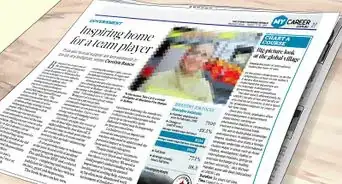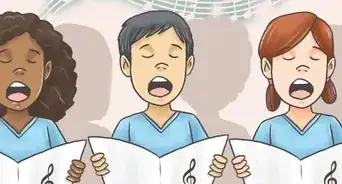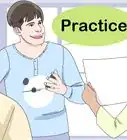This article was co-authored by wikiHow Staff. Our trained team of editors and researchers validate articles for accuracy and comprehensiveness. wikiHow's Content Management Team carefully monitors the work from our editorial staff to ensure that each article is backed by trusted research and meets our high quality standards.
There are 10 references cited in this article, which can be found at the bottom of the page.
wikiHow marks an article as reader-approved once it receives enough positive feedback. In this case, 100% of readers who voted found the article helpful, earning it our reader-approved status.
This article has been viewed 66,545 times.
Learn more...
Everybody pretends from time to time, and everybody makes believe. It takes a special type of human to act out those imagined realities, and an even more creative one to help others learn how to do so! If you’re teaching drama for the first time, fine-tuning your drama-teaching technique, or simply hoping to incorporate drama lessons into your everyday tutelage of whatever sort, there are reliable exercises and other tricks you can learn about how to teach drama.
Steps
Teaching Drama to Actors at Any Skill Level
-
1Have everyone share their names and personalities. Whether you’re teaching professional child actors or first-time old-timers, you need to run an introductory exercise. There are plenty of particularly fun ways to do this dramatically.[1]
- Try a name and action exercise. Have everybody state their name while performing an action that reflects their personality.
- Then have everyone else – in unison – say their name out loud and perform the action as well.
-
2Ask the class to greet each other while acting. Have everyone pair off and face one another. Choose some basic greetings for everyone to exchange, such as “Hello, how are you?” as well as a response, such as “Very well, thank you for asking.” Then direct your students to act this exchange out as different characters.[2]
- Call out the type of characters you want your students to embody, and cycle through several different characterizations.
- Simply say “Greet one another as ________.”
- Fill in the blank however you want. Some great ideas include:
- …old, bitter enemies who have forgotten why you’re enemies.
- …internet lovers that have never met in person.
- …constipated business professionals.
- …neighbors about to argue about the property line. Again.
- Go rapid-fire through the exercise, allowing only enough time for the lines to be exchanged.
- Point out afterwards that even one line of seemingly uninteresting dialogue can have immense dramatic effect.
Advertisement -
3Have your participants contribute to the course structure. A great discussion to have with your class early in your course is about what they’re hoping to gain from your time together. This will be helpful with both experienced and brand new drama students. Facilitate this discussion by asking questions and having your students each weigh in.[3]
- To start the discussion, ask what everyone thinks “drama” and “acting” entail. This alone will likely yield some interesting discussions.
- Ask about everyone’s personal experience acting. This will help you steer following sessions towards exercises appropriate for the levels of experience in that particular group.
- Ask how participants incorporate acting into their day-to-day lives. This will remind everyone about the degree to which drama is a part of our lived realities, even when we’re not consciously acting.
-
4Include a pantomime in every class. Students at any level will want to physically act in every class. Pantomimes are vital exercises because so much of drama is non-verbal. Lead team acting exercises with pantomime exercises that are role or location inspired.[4]
- Separate the class into groups. Give each group a different prompt, reminding them that speaking is not allowed – though allow them to speak amongst themselves for a few minutes to plan their group pantomime.
- Remind each group to plan a specific task for each participant.
- Ideas for role-based prompts include: playing a sport, building something, and working in an emergency room.
- Ideas for location based prompts include: in the teacher’s lounge, in a deep sea trench, or at an abandoned amusement park.
- Have the full class reconvene for a one or two minute silent performances by each group.
-
5Conclude the session dramatically. Have everyone take turns saying goodbye to the class. Here’s the catch: each student must say something different, and they have to act it out with both voice and behavior as they say goodbye. Remind everyone that the more dramatic the sign off, the better.[5]
- To encourage your classmates, give it a go yourself first.
- Say something simple like “I love drama!” but raise your arms and absolutely belt out the phrase like an opera singer. Throw in a curtsy to drive home the statement.
Leading Improvisation Exercises
-
1Feature improv lessons prominently. Improvisation exercises are hugely beneficial for drama students at all levels of expertise. They facilitate acting skills such as comfort performing various roles, the ability to read and interact with other actors, clear expression, and instinctive decision-making. They also help stage actors train themselves to stay calm no matter what happens! [6]
- Be sure to include a variety of improv exercises throughout a class session, shaping them around different themes.
- Touch on themes that will explicitly facilitate voice work, body work, impromptu interaction, and even confidence building.
-
2Make any exercise improvisational. Shout out an additional rule that must be incorporated into an exercise while students are mid-action. Explain the rules early in the course: when you shout out a recognizable phrase, the students must incorporate the associated rule into whatever they’re already doing.[7]
- Try "memory loss" to indicate everyone should act like they just forgot what they were doing and have to figure it out again.
- Use "the world ends tomorrow" to add some frantic - and especially dramatic - developments to an exercise.
- Another classic, simple option is “slow motion”, which you can refer to more playfully as “the blob monster.”
-
3Incorporate the attack of the blob. For instance, shout out “the BLOB attacks!” to indicate that an imagined blob of goop has occupied the room, sticking to everyone, slowing them down, and otherwise messing with their movements or ability to speak.[8]
- Specify that improvisational qualifiers such as the blob monster cannot be referenced verbally within the narrative of the exercise.
- Students must simply incorporate the new improvised rule via action.
-
4Get students to have conversations with sounds instead of words. Altogether or in smaller groups, have students sit in a circle. Have one student begin the exercise by turning to another and “saying” something completely nonsensical, perhaps not even using actual words. Have the recipient then turn to the next person and try to reflect the first student’s “statement” in some way.[9]
- Tell students that they can incorporate each other’s actual sounds, inflections, or simply speed of sound-making.
- Further, point out that accents, exaggerations, and intonations can also be mimicked or morphed, and that the exercise will help everyone’s vocal creativity expand.
-
5Instruct students to have a conversation with no sounds whatsoever! Up the same sort of exercise with an entirely non-auditory version of communication. Get students to act out emotionally charged scenes quietly. Ask them to use facial expressions and body language to act out how they feel about an imagined situation.[10]
- Call out developments in the scenario to shift the participants’ emotions.
- Direct them to avoid too much mouthing of words or exaggerated arm movements, as these are too easy.
-
6Return to word-based communication by getting students to speak collectively. Assemble students in small group circles and tell someone in particular to think of a sentence but not to share it with the group. Have that person slowly start to sound out the first word and have everyone else join in making the sound.[11]
- The person who is leading the sentence will then move into the next sound.
- Slowly and steadily, the group will come to speak the sentence altogether.
- In the process, they will learn to read and anticipate the expression of one another’s voices – and seemingly, of one another’s minds!
Teaching Drama as Part of an Educational Curriculum
-
1Recognize the value of drama in education. Whether tasked with teaching drama class at your school or interested in incorporating drama into a lesson in a different discipline, it can help to recognize the strengths associated with dramatic education. For one, teaching drama facilitates the learning of lessons that would otherwise be nearly impossible to teach in the classroom setting.
- Note that role-playing historical or even contemporary social-political scenarios will allow students to more comprehensively consider the topics you want them to be familiar with.
-
2Start and participate in skits with your students. This will immediately help introduce or explore different perspectives on big, multifaceted issues. This can be done at every level of education, as the content of almost any discussion - at least in most disciplines – can be explored via role-playing.
- Hold debates where students take on characterizations that reflect their assigned or chosen roles. This will allow them to more freely convey their thoughts, through the screen of an adopted persona.
-
3Get help from drama-teaching guides and websites. So – despite a blatant lack of experience – you’ve been asked to teach a drama course, or directed to include a dramatic element in your lesson plans? You don’t know where to start. Thankfully, there’s plenty of help available online in terms of specific activities and even complete lesson plans.[12]
- Know that most of the materials that are designed to help people teach drama do not assume that the instructor has had much – if any – experience. Most will walk you through everything you need to know!
- If you’re hoping to incorporate role-playing into a specific type of course, such as language instruction, you can find guides tailored towards these pursuits!
-
4Get lesson plans, ideas, and more at no cost. Organizations including state government educational departments and other non-profit organizations have made age-specific lesson plans for pre-K through high school level drama classes. For instance, the Kentucky Department of Education has made a wide-ranging set of drama lesson plans freely available online. For additional guidance on lesson plans and activity ideas:
- Theatre folk has a whole slew of scenes for different groupings, as well as lessons and tips on acting and all the other elements of theatre production.[13]
- The Drama Resource website is easy to navigate and offers all sorts of games to play during drama class, as well as other resources that are also available on the Drama Resource app.[14]
- The Theatre Education Database hosted by BYU provides resources to help theatre educators make lesson plans and more.[15]
-
5Recognize how teaching drama will improve your skills as an educator. Hopefully, you aren’t too worried about seeming unprofessional or overly playful in front of your students. If you are, reflect on whether these sentiments are coming from a sense of nervousness about teaching something you haven’t taught before. Recognize the fact that teaching drama will inevitably increase your own abilities and enjoyment of acting. Further, participating in drama exercises altogether will increase the comfort and ease with which you and your students interact.[16]
- Conceptualize your role as taking part in an experience that everyone is learning from.
- Stick to activities that you’re comfortable participating in. If you’re hesitant, start with just a few simple role-playing exercises.
- As the course progresses, you’ll likely be more willing to try out new exercises!
-
6Be patient with your students. If you’re teaching drama as part of a curriculum that requires it, recognize that some of the students may not want to be there. Never force a student who is shy or hesitant to participate to do so. Instead, ask them to contribute by commenting on other students’ performances and offering ideas about how to act things out in another way.
- By asking a student to talk about acting something out, you will encourage them to get closer to actually doing so. Soon enough, you’ll have a room full of stars.
Maintaining Good Behavior in Drama Class
-
1Set up specific rules for drama class. Maintaining good behavior in drama class can be a little more challenging than it is in other types of classes, since the students are actually encouraged to goof around. Set up some rules that are specific to your class that will help you prevent and respond to any behavioral issues.[17]
- Encourage your students to take part in making the rules. Ask them what they think class rules should be, and post the ideas you agree with.
- Include rules like “Always be friendly and helpful” and “Encourage each other to be creative.”
-
2Specify any consequences for bad behavior and always enforce them. Especially in a drama class, where dramatic behavior is literally encouraged, students will test the boundaries. When they break a specific rule that the class has been made aware of, quickly stop class and address the problem.[18]
- Consistency and quickness are vital here. Don’t let your class get out of hand by stopping a poor behavior before it escalates or spreads.
-
3Be creative with “punishments.” Respond to misbehavior with imaginative, learning-oriented, and non-escalatory punishments. For instance, have a student who broke a rule sit out the next exercise and think about why they shouldn’t have acted as they did. Before rejoining the group, have them pantomime their bad behavior, and then act out the good behavior they’re going to maintain the rest of class.[19]
- Alternatively, ask for an “actor’s promise” from the student who broke a rule. This is especially good for a student who is hesitant to participate in acting exercises.
- Have the student prepare and give a statement after sitting out and exercise. Encourage them to act apologetic – or to be funny – and ask that they specifically promise to honor the class and their classmates moving forward.
Community Q&A
-
QuestionHow many rules does drama have?
 Community AnswerThere are no rules to drama. That's the fun part! The only rules that should be in place have nothing to do with acting, just commonsense things like: Don't be loud, pay attention and try to remember your lines.
Community AnswerThere are no rules to drama. That's the fun part! The only rules that should be in place have nothing to do with acting, just commonsense things like: Don't be loud, pay attention and try to remember your lines.
References
- ↑ https://www.dramanotebook.com/drama-name-games/
- ↑ https://www.dramanotebook.com/drama-name-games/
- ↑ https://www.dramanotebook.com/talk-acting/
- ↑ https://www.dramanotebook.com/perform-short-pantomime/
- ↑ https://www.dramanotebook.com/introduce-closing-ritual/
- ↑ http://www.teaching-certification.com/drama-teacher-certification.html
- ↑ http://www.teaching-certification.com/drama-teacher-certification.html
- ↑ http://www.teaching-certification.com/drama-teacher-certification.html
- ↑ http://www.teaching-certification.com/drama-teacher-certification.html
- ↑ http://www.teaching-certification.com/drama-teacher-certification.html
- ↑ http://www.teaching-certification.com/drama-teacher-certification.html
- ↑ http://iteslj.org/Articles/Royka-Drama.html
- ↑ https://www.theatrefolk.com/free-resources
- ↑ http://dramaresource.com/
- ↑ http://tedb.byu.edu/
- ↑ http://iteslj.org/Articles/Royka-Drama.html
- ↑ https://www.dramanotebook.com/drama-classroom-management/
- ↑ https://www.dramanotebook.com/drama-classroom-management/
- ↑ https://www.dramanotebook.com/drama-classroom-management/
About This Article
If you're teaching your first drama class and you're not sure where to start, begin by visiting a state education department website, where you can find lesson plans and activity ideas. Then, pick activities you’re comfortable participating in, like role-playing exercises, and tailor them to your class. If your students are reluctant to get started, try having them debate in their assigned roles to practice conveying their thoughts as different people. Alternatively, encourage them to perform in skits as their characters to help them dramatize their roles. For tips on how to teach drama by leading improvisation exercises, scroll down!


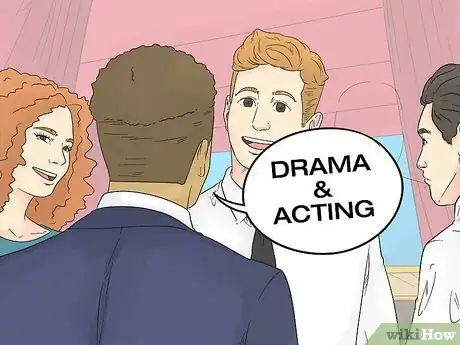





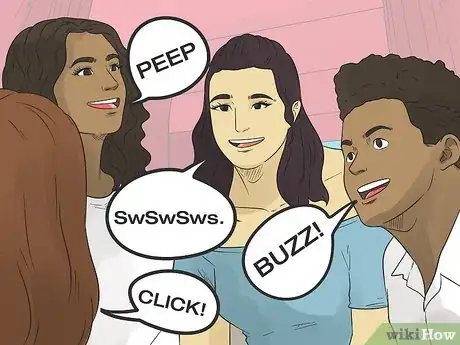


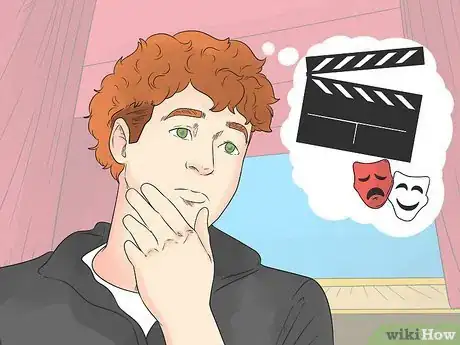

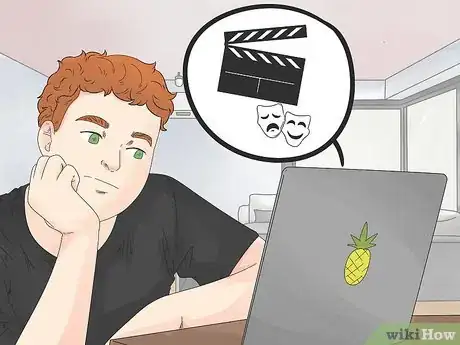



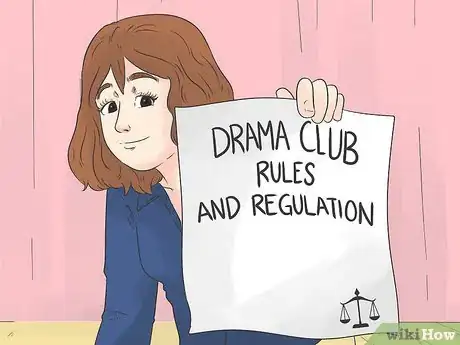
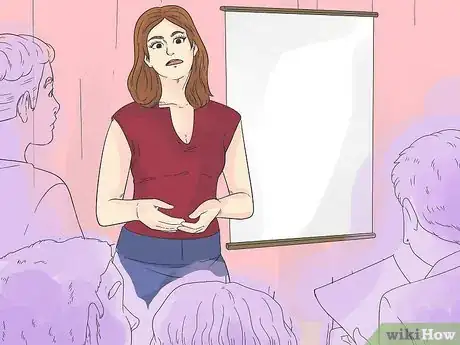



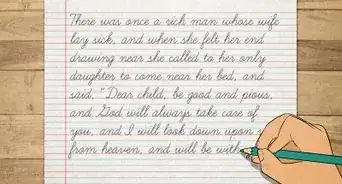


-Step-15.webp)


